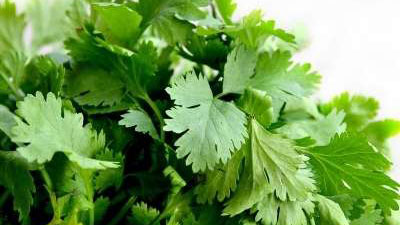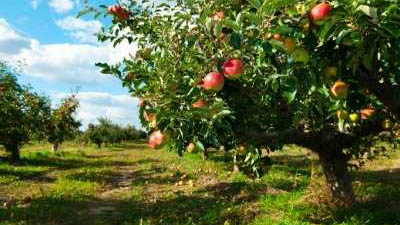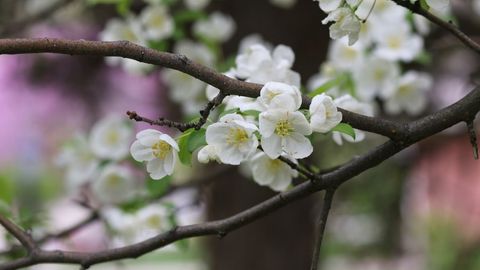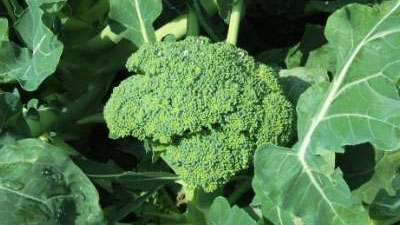Cilantro/Coriander in the Garden

Cilantro/coriander is a cool-season herb that grows best in full sun and fertile, well-drained soils. Plant seeds ¼- ½ inch deep after danger of frost has passed and mulch around the seedlings as soon as they emerge. Water sparingly as cilantro/coriander does not do well in damp or humid conditions. Side-dress cilantro with nitrogen in early summer. Over-fertilization decreases plant flavor. Harvest cilantro leaves when they are about 6 inches long. For coriander seeds, wait until the plant has flowered and the seed heads turn brown. Place the plant in a bag and let them dry until the seeds fall off.
Varieties
Costa Rica, California Long Standing, Leisure, Lemon, Delfino, Moroccan, and Slow Bolting are excellent varieties. When selecting a variety, keep in mind the end use of the plant. If harvesting for the leaves, choose a cultivar that is slow bolting (Slow Bolting and Leisure). When selecting for seed, all varieties perform well.
How to Grow
Soils
Cilantro/coriander grows well most soil types provided they are well drained and moderately fertile. Most soils in Utah are well suited for cilantro production.
Soil Preparation
Before planting, incorporate 2-4 inches of well-composted organic matter per 25 square feet of garden area. Work this into the top 4-6 inches of soil leaving a loose seedbed to allow the seeds to emerge easily.
Plants
Cilantro/coriander prefers a sunny and dry location. In cooler locations in Utah, plant in the early spring for summer to fall harvest. In warmer areas, plant in the fall and harvest in the spring. Seeds germinate in about 21 days and grow 1-3 feet tall. Cilantro/coriander can also be started indoors 4-6 weeks before transplanting. Minimize root disturbance when transplanting seedlings.
Planting and Spacing
Plant cilantro seeds ½ inch deep and space 2 inches apart if you are planning to use the plant for its leaves. For coriander seed, space the seeds 8-10 inches apart. Rows should be at least 15 inches apart. Successive plantings may be done until late summer if a continued harvest is desired.
Water
Cilantro requires regular watering during establishment. Once the plants are established they need little water. Avoid over-watering as this plant does not do well in damp or humid conditions.
Fertilization
Fertilize 1-2 times during the growing season by applying ¼ cup of a nitrogen based fertilizer (21-0-0) per 25 square foot of growing area. Be careful of over fertilization, too much nitrogen can make the plant less flavorful.
Problems
Weeds
Mulch around the plants as soon as they emerge to prevent weeds. Till shallowly to minimize root damage.
Insects and Diseases
For additional information on insect and diseases visit the Utah Pests website.
| Insects | Identification | Control |
|---|---|---|
| Leafhoppers | Small insects with wings held tent-like over back. Piercing-sucking insect that feeds on plant sap. May transmit Aster’s Yellows. |
Appropriate insecticide |
| Disease | Symptoms | Control |
|---|---|---|
| Aster’s Yellow Disease | The disease is caused by leafhoppers; flowers turn yellow, plant grows tall and spindly, plant eventually becomes sterile. | Use appropriate insecticide to control leafhoppers (the carriers of the disease). |
| Damping Off or Seedling Rot | Death of new seedlings and yellowing of plants. | Crop Rotation. |
Harvest and Storage
Cilantro
Harvest when leaves are about 4-6 inches tall. Cilantro can be used fresh, or stored either by freezing or drying. When freezing, simply place in a resealable bag and put in the freezer. Dry the cilantro by hanging it upside down in a warm place.
Coriander
For seeds, let the plants grow until the seeds form in late summer or early fall. When plants begin to turn brown, cut off the seed heads, put them in a paper bag and hang this until the plant dries and seeds fall to the bottom of the bag. Store seeds in sealed containers.
Nutrition
A ¼ cup serving of cilantro leaves provides some fiber, protein, carbohydrates, sodium, Vitamin C, and very little fat.
Frequently Asked Questions
What can I do to keep my cilantro/coriander from bolting?
Plant early when it is cool. Start seedlings indoors and transplant into the garden when frost has passed. Mulch the soil to keep it cool and make sure the plant is well watered. Grow plants close together.
Is it advisable to plant my cilantro/coriander indoors?
Yes, but make sure that the container is deep enough. Be sure to grow it in a place where it will get enough sun. Try to keep the soil temperature below 75°F, especially if grown near a heat source or a particular window that becomes quite warm
View En Espanol
Published August 2018
Utah State University Extension
Peer-reviewed fact sheet
Download PDF
Authors
Colt Miller and Dan Drost
Related Research







